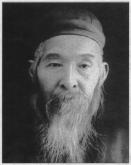 Sun style Taijiquan is one of the main branches of taijiquan in existence today. While the form was created only at the turn of the last century, the fixation of the number of steps in the routines got people confused. Interestingly, this was believed to vary between 98, 97 and 73. I hope to shed some light on the origins of these numbers and hope future generations will be able to have a clear distinction between the forms.
Sun style Taijiquan is one of the main branches of taijiquan in existence today. While the form was created only at the turn of the last century, the fixation of the number of steps in the routines got people confused. Interestingly, this was believed to vary between 98, 97 and 73. I hope to shed some light on the origins of these numbers and hope future generations will be able to have a clear distinction between the forms.
Sun style count her blessings through the founder Sun Lu Tang’s book on taijiquan among his other books in internal arts. The Study of Taijiquan (Tai Ji Quan Xue) is a classic reference text that outlines the steps and movements in Sun style taijiquan. In this book, Sun Lu Tang explained the origins of Taiji through the use of I-ching. This explains why the first movement in Sun style taijiquan is The study of Emptiness or Wu Ji Xue followed by The Study of Extremes or Tai Ji Xue. In fact, this is the same for all Sun style arts regardless of Taijiquan, Baguazhang or Xingyiquan. The number of steps in The study of Taijiquan clearly spells out as 98, and the original routine resembles very much to Wu(Hao) style Taijiquan with diagonal motion and jumping kicks. Sun Lu Tang, Sun Cun Zhou, and Sun Jian Yun had agreed to the finalization of the form. This was the 98 steps that formed the basis for later change.
In 1957, Sun Jian Yun published a book on Sun Style Taijiquan with the title Tai Ji Quanunder People’s Sports Publisher. This book had changed the number of steps from 98 to 97, possibly modified in line with the rest of the Taijiquan styles which include Opening Stance or Qi Shi as the first movement. Particularly worth noting is the Opening Stance is not the only movement changed in the sequence but other names and the actual execution of the movements as well. Comparing between Sun Lu Tang’s book and Sun Jian Yun’s, you will find some technical explanation used in the former not applicable to that of Sun Jian Yun’s. Some practitioners argued that the difference is due to how Sun Lu Tang practiced his routine in his later years. While we will never know, but I do not think age is a reason. This 97 steps form is essentially Sun Jian Yun’s style of Taijiquan.
The late eighties and early nineties saw a surge in contemporary wushu in China; this trend swept across all traditional Chinese martial arts in China and Taijiquan was not spared. Following the creation of 48 steps Taijiquan, and later 42 steps, were competition routines of traditional taijiquan. These include Chen style (56 steps), Yang Style (40 steps), Wu style (45 steps), Wu(Hao) style (46 steps) and Sun style (73 steps). The 73 steps was created by Men Hui Feng based on the traditional routine from Sun Jian Yun and Yang Style. The intention of competition routines is to be used for competition; the form should be standardised for ease of judging and include challenging and aesthetically pleasing movements to score points. For many who did Chen style 56 steps will immediately know that there is a big difference when we move on to learn Lao Jia Yi Lu, many times we have to unlearn to learn the proper techniques of the traditional forms. Sun style is no exception, and it is rather sad to see people apply the movements of 73 steps to the traditional routine and claim that Sun style is very easy to learn and master.
The issue with 73 steps lies not just in the routine but its propagation too. Outside China, Sun style is flooded by 73 steps and no proper care is taken to distinguish the forms. This render many, especially newbies, to believe that 73 steps is itself Sun style taijiquan. I have personally seen community centers and places promoting under the banner “Sun style Taijiquan” when in fact they are promoting osteoporosis/arthritis taichi and/or Sun style 73 steps. Please kindly promote as what you will teach and do some justice to the late Sun Lu Tang.
See Ivan's blog.
Comments
Post a Comment